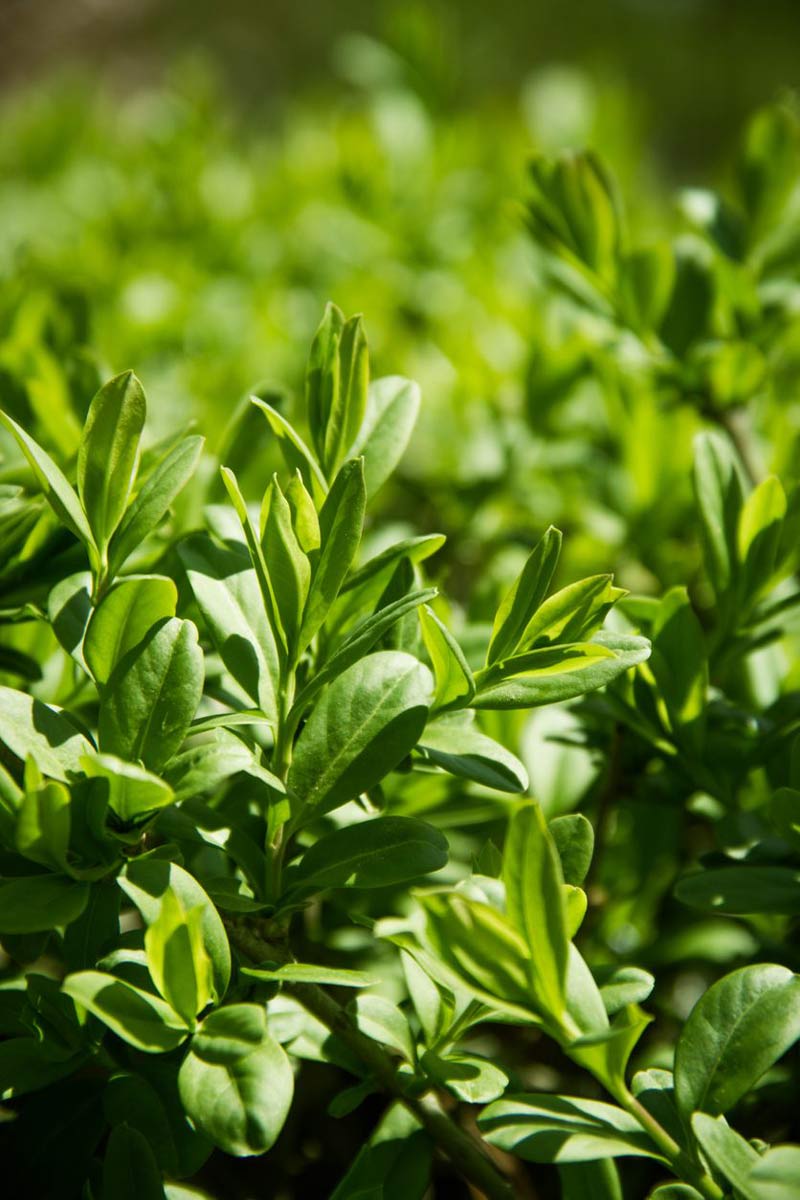Boxwoods are a quintessential landscape plant in New England. Where once they were viewed as almost carefree, they have become plagued with many insect and disease issues.
Proper cultural care of boxwoods is pivotal in their health and performance. It’s important to remember that stressed plants are vulnerable plants. Stressed out plants aren’t happy and this is when all kinds of insect and diseases can attack a plant. Keeping boxwoods happy can help tremendously with keeping so many of their problems at bay.
The number one mistake I see often with boxwoods is improper pruning or over-pruning. Boxwoods should only be sheared once a year and it needs to be done at the right time of year. Boxwoods should never be pruned in the spring. April through June is when they are actively growing, trying with all their might to send out new growth. Pruning any plant while it is actively growing is not recommended. Plants use a great amount of energy to form new growth, and if you cut that growth off during the growing season, it has a hormonal response to push back and replace all the growth you just cut off. To do this the plant uses energy reserves that should be allocated for other things such as defense, drought stress and winterization. This depleted energy reserves causes stress in the plant and then the insects and disease attack!
In addition to the proper timing of the pruning, over-pruning is also very stressful and should be avoided. Waiting until the new growth has hardened off will help to prevent your boxwoods from forcing new growth out, thus not needing to over-prune. Boxwoods should be considered “hardened” when the new growth color matches the same green as the old growth.
If after the initial pruning, your boxwoods send out long stray shoots, use a hand pruner to snip off just the errant pieces of growth, fight the urge to shear the entire bush again.
If you really want to ensure a uniform look after pruning have a growth regulator applied. A licensed turf and ornamental horticulturalist can apply growth regulators directly after pruning that slow cell elongation down and keep the bushes nice and tight through the rest of the season.
We have observed in plants that are over-pruned a higher incidence of both Volutella blight and boxwood blight. We have also observed the boxwoods that are spring pruned, start to send out stunted new growth in subsequent seasons and that stunted new growth leads to part of the boxwood dying out.
When dealing with fungal issues like Volutella and Boxwood blight, make sure that all tools that are used on your boxwoods have been disinfected between uses. Boxwood blight especially, can be carried from plant to plant and property to property. Once boxwood blight infection has reached your property there is very little that can be done to save them. Removal and soil replacement are the only option to protect the rest of your boxwoods.
As if all of this wasn’t enough to make you say good riddance to boxwoods, next we deal with the insect challenges. Boxwood leaf miner is the most common and destructive insect pest of boxwoods.
The best way to deal with the boxwood leaf miner is a systemic injection or basal drenching of a imidacloprid. This should be administered by a licensed applicator as imidacloprid is a restricted product. Foliar spray applications are much less effective on the boxwood leaf miner as they only emerge as adults that can be sprayed for a short period of time. Organic applications of neem oil can be used for organic properties, but it will need to be done every year mid and late may to keep the numbers of leaf miners down to tolerable thresholds.
Once leaf miners are found, often time other pests will be inhabiting the boxwoods. One thing we must always be careful of is OVER treating boxwoods as that, too, can cause issues and lead to another application needed, dinotefuran which has proven to help with multiple invaders.
All this information is overwhelming, we know. But when you have great professionals to guide you it’s not so daunting, so give us a call today. We can get you an effective treatment and care program for your boxwoods and all your landscape plants, and we can recommend some great alternatives to boxwoods in your landscape that are not under constant attack in our climate and locale. Bottom line, boxwoods can add New England charm to any landscape but they need to be cared for by true experts!



